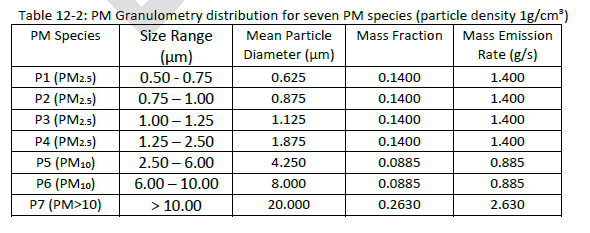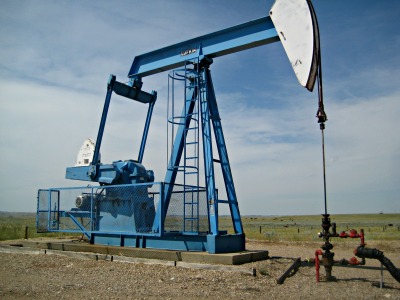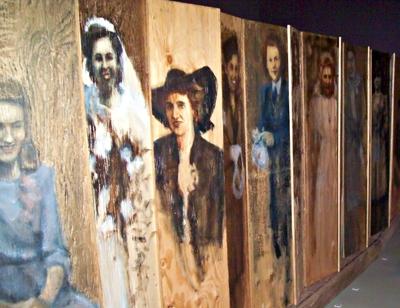- Air Homepage
- Alberta Air Quality
- Air Quality Dispersion Modelling
- Secondary Pollutants of Air Pollution
How advanced models reveal Secondary Pollutants of Air Pollution
This overview is to describes the air quality models and techniques used to predict the dispersion and chemical transformation of emitted substances into secondary pollutants of air pollution in BC, Alberta, and Saskatchewan.
 In British Columbia, Alberta, and Saskatchewan
In British Columbia, Alberta, and SaskatchewanThey may include particulate matter (PM2.5) and ozone (O3), smog and a variety of acid compounds.
In these provinces, we use CALPUFF and sometimes CMAQ or AERMOD to model secondary pollutants.
While doing so, we need to remember to adhere to the strict requirements for regulatory approval and the principles behind careful data preparation.
Why is considering these pollutants important?
Take a look at these questions examined to model invisible yet harmful pollutants in the air:
- How do secondary pollutants silently affect your health?
- What is the connection between pollution modelling and large-scale environmental protection?
- Why do government bodies recommend we use models like CMAQ and CALPUFF to set air quality standards?
- What are the challenges of predicting pollution from small sources that might not be indicated using typical models?
- What decisions about environmental advocacy use this special knowledge of the science behind air pollution?
- What specialized air pollution forecasting tools and models do these environmental scientists use?
- How does this knowledge impact urban planning and industrial emissions?
British Columbia's Plume-in-Grid Approach
For predicting secondary PM2.5 and O3, regional models like CMAQ are usually used over large areas with lots of sources. It's hard to predict pollution from a single point source or sources in a small area because the plumes from these sources can't be resolved by the model grid.
 Predicting secondary pollutants
Predicting secondary pollutantsBC has dispersion modellers use plume-in-grid (PIG) methods to account for sub-grid processes like dispersion and chemical transformation. Starting with Version 6.0, CALPUFF includes a built-in RIVAD/ISORROPIA chemical mechanism, just like CMAQ, allowing it to calculate concentrations of secondary PM2.5.
At the moment, there's no preferred method. Methods should be discussed with the Ministry and included in the Dispersion Modelling Plan if it's a critical issue. It's best to check the text in British Columbia's Air Quality Dispersion Modelling Guidelines and contact the authorities in charge.
Dispersion Guidelines for Secondary Pollutants of Air Pollution in Alberta
Ozone modelling may be necessary for advanced assessments or regional air quality planning. In most cases, Alberta Environment and Protected Areas (AEPA) accepts models recommended by the Environmental Protection Agency, like Models-3/CMAQ, CAMx, REMSAD, SCIPUFF, and UAM-V. You can get them through Environmental Protection Agency's Support Center for Regulatory Air Models (SCRAM).
Preparing input data for these specialized models usually takes more time than for other models. In addition, modelling ozone accurately requires a larger modeling domain, emissions inventory, and special attention to boundary conditions. Before modeling of this type begins, a modelling plan addressing specific needs must be submitted in writing by the Director. A director's permission is needed before proceeding with the assessment.
 Air quality assessments
Air quality assessmentsModelling secondary particulate matter isn't usually needed for approval applications, but CALPUFF is a recommended model for regional assessments when a study at this level is necessary. Use the default chemistry for acid deposition assessments when dealing with secondary inorganic particulates. Compounds should be partitioned using methods specified in the guidelines, and their concentrations should be adjusted according to the recommendations.
It takes more information and careful consideration to model secondary pollutants of air pollution (organic particulate matter) using SOA chemistry in CALPUFF. You have to get the Director's approval before using other models like CMAQ. Before accepting any modeling assessment submitted, the Director needs to give permission in writing.
Here's where to find relevant dispersion modelling info. Search the AEPA website and the United States EPA website.
This page has information about AEPA, Alberta regulatory information, regional meteorological data sets, and model guidelines.
 Good environmental science for the benefit of our children.
Good environmental science for the benefit of our children.Here are some helpful links:
- Alberta regulatory information: https://www.alberta.ca/air-quality-modelling.aspx.
- You can find the flaring tool on the Alberta Energy Regulator's home page: https://aer.ca/regulating-development/rules-and-directives/directives/directive-060.
- The Environmental Protection Agency SCRAM Home Page: This site covers topics about dispersion models. Here's the link: http://www.epa.gov/scram.
- The Canadian Climate Normals are free at: http://climate.weather.gc.ca/climate_normals.
Using this information, you can compare your results with dispersion model results and analyze climatological wind directions, wind speeds, and temperatures to determine the frequency of specific meteorological conditions.
The Saskatchewan Air Quality Guidelines for modelling PM
Particulate matter comes from sources like stacks, burning, and road dust. It's important to know the particle size distribution and aerodynamic properties when modelling. With AERMOD and CALPUFF, you can model particulate deposition for different sizes, mass fractions, and densities.
In AERMOD, you first define the mass fraction, and then you can use a table of input values. Particle sizes, mean diameters, mass fractions, and emission rates for different particulate species are in this table.
You can use this table for CALPUFF deposition calculations:

There's a default particle density of 1 g/cm3 that you can use, but you can adjust it if needed, especially for sources with different densities like hard rock mining.
Modify the input parameters if you need to adjust for different densities. To do this, you have to change the geometric mean diameter while keeping the mass the same.
Modelling particulate matter in the air requires understanding particle size distribution and aerodynamic properties.
Looking for Expert Air Quality Dispersion Modelling?
Let Calvin Consulting Handle It.
At Calvin Consulting Group Ltd., we specialize in air quality dispersion modelling assessments for industries just like yours. Whether you’re seeking approval to operate or handling an emergency, we've got you covered.
The reports we prepare meet both environmental and health standards, so you don't have to worry about regulatory approvals. For precise results, we use top-tier models like AERMOD and CALPUFF.
Why Choose Calvin Consulting Group?
When it comes to air quality dispersion modelling, time is of the essence. You need fast, accurate solutions. Calvin Consulting's consultants are some of Canada's most experienced. We’ve trained personnel for Alberta Environment and Protected Areas (AEPA) and Environment Canada, so you can trust us to get it right the first time.
Our five-year meteorological data and expertise in AERMOD and CALPUFF models bring you precise, regulatory-compliant assessments for industrial emissions and potential risks. We provide everything you need—from the collection of terrain and emissions data to a polished final report ready for submission.
When environmental and safety standards are on the line, you want to be sure you're working with the best. Whenever an industry needs air quality assessments, we're the go-to partner.
Need a dependable partner for your next air quality assessment? Contact Barry today at this email:

And let Calvin Consulting take the complexity out of your air quality modelling needs.
Clean air is our Passion...Regulatory Compliance is our Business.
It's hard to predict secondary pollutants like PM2.5 and ozone...
so regional models like CMAQ are often used to handle large areas that have multiple pollution sources. When it comes to smaller, localized sources, plume-in-grid methods can help simulate processes that other grids miss. CALPUFF, which uses the RIVAD/ISORROPIA chemical mechanism, can improve accuracy in this regard.
Detailed analysis is needed in air quality management and environmental planning, especially for assessments that need extra scrutiny.
Do you have concerns about air pollution in your area??
Perhaps modelling air pollution will provide the answers to your question.
That is what I do on a full-time basis. Find out if it is necessary for your project.
Have your Say...
on the StuffintheAir facebook page
Other topics listed in these guides:
The Stuff-in-the-Air Site Map
And,
Thank you to my research and writing assistants, ChatGPT and WordTune, as well as Wombo and others for the images.
GPT-4, OpenAI's large-scale language generation model (and others provided by Google and Meta), helped generate this text. As soon as draft language is generated, the author reviews, edits, and revises it to their own liking and is responsible for the content.



New! Comments
Do you like what you see here? Please let us know in the box below.